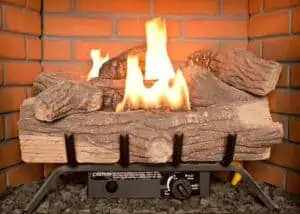How Much Propane Does a Gas Fireplace Pilot Light Use?
Whether you’re looking to upgrade your old gas fireplace, install a new unit, or just looking to save money, one question on your mind is how much propane does a gas fireplace pilot light use? The amount of gas used by a pilot light will depend on a variety of factors, including the size of your home, your location, and the weather. A standard pilot light can burn 0.0065 gallons per hour, but a standing pilot light can use as much as 715 BTUs per hour. In some instances, your fireplace may be equipped with a pilot light switch, which means you can shut off the flame.
(Searching in Google “gas fireplace servicing“? Contact us today!)

The gas fireplace pilot light is a small flame that is used to light up the main burner. The small flame also helps to keep the firebox dry from the inside. It also is the source of a small amount of heat that helps keep spider webs from clogging your pipes. If your pilot light is on all the time, you may be wasting gas, money, and a little bit of your sanity.
The average gas fireplace pilot uses 0.6 m3 of gas per day. While that might not seem like much, it’s actually quite a bit. During winter, your fireplace will need more fuel to warm your home. In the summer, you might want to rethink your propane usage. A gallon of propane contains 91,000 BTUs. This means that you can use up to 50 gallons of propane over the course of a year, depending on the temperature and weather conditions.
Keeping a pilot light lit all the time will result in a higher gas bill than you probably need. One of the best ways to save money is to turn off the pilot light when you don’t need it. In addition, you can keep a pilot light on for longer periods of time to keep moisture out of your fireplace. This can also help your system last longer.
A pilot light also has other uses, like the ability to create a film around glass doors. Having a pilot light that burns only when you need it can result in a less-than-perfect glass door. This will leave a nasty residue on the glass. A pilot light also has the ability to attract spiders, which is something you don’t want. Fortunately, spiders aren’t around in the summer.
The amount of gas your fireplace pilot light uses will depend on a number of factors, including the size of your home, the weather, and the type of fuel you use. The most efficient gas fireplace is likely to be a modern model that can be run with natural gas. The most efficient model will use less gas than your average stove, and will also last longer.
Keeping a pilot light lit is a bit of a hassle, but it does help keep the firebox dry from the inside. If you’re going to do it, though, be sure to turn off the gas powering the light first.

